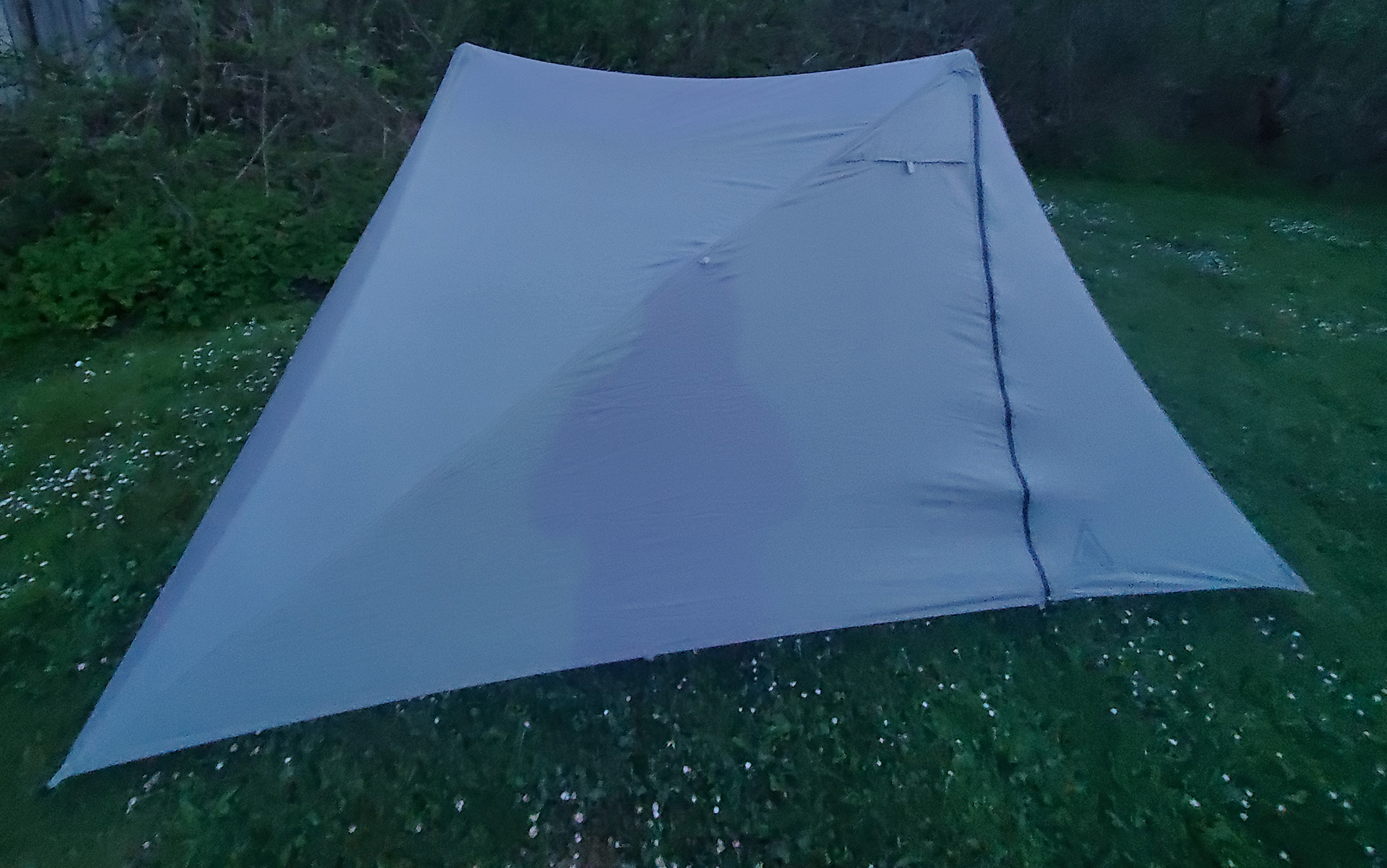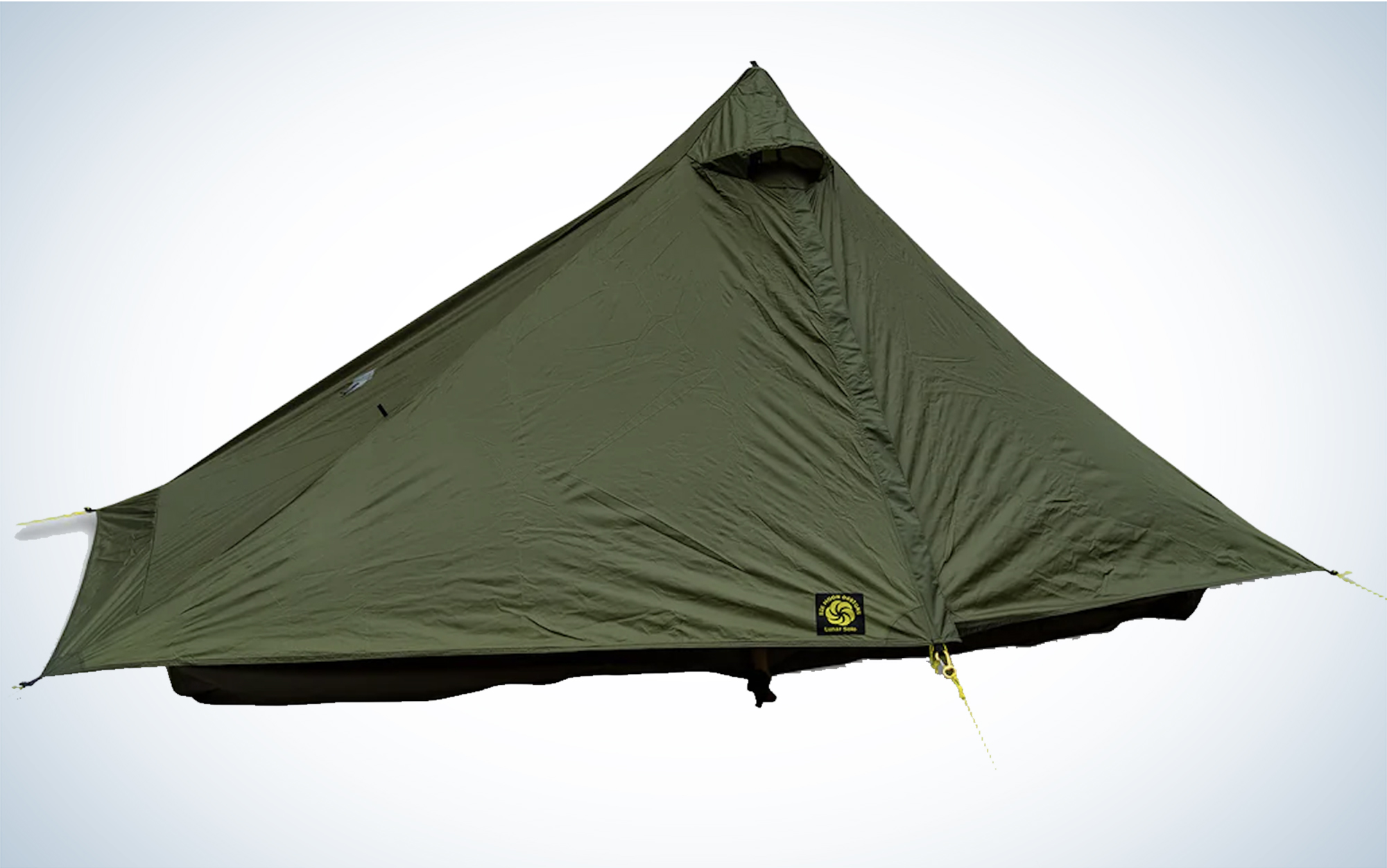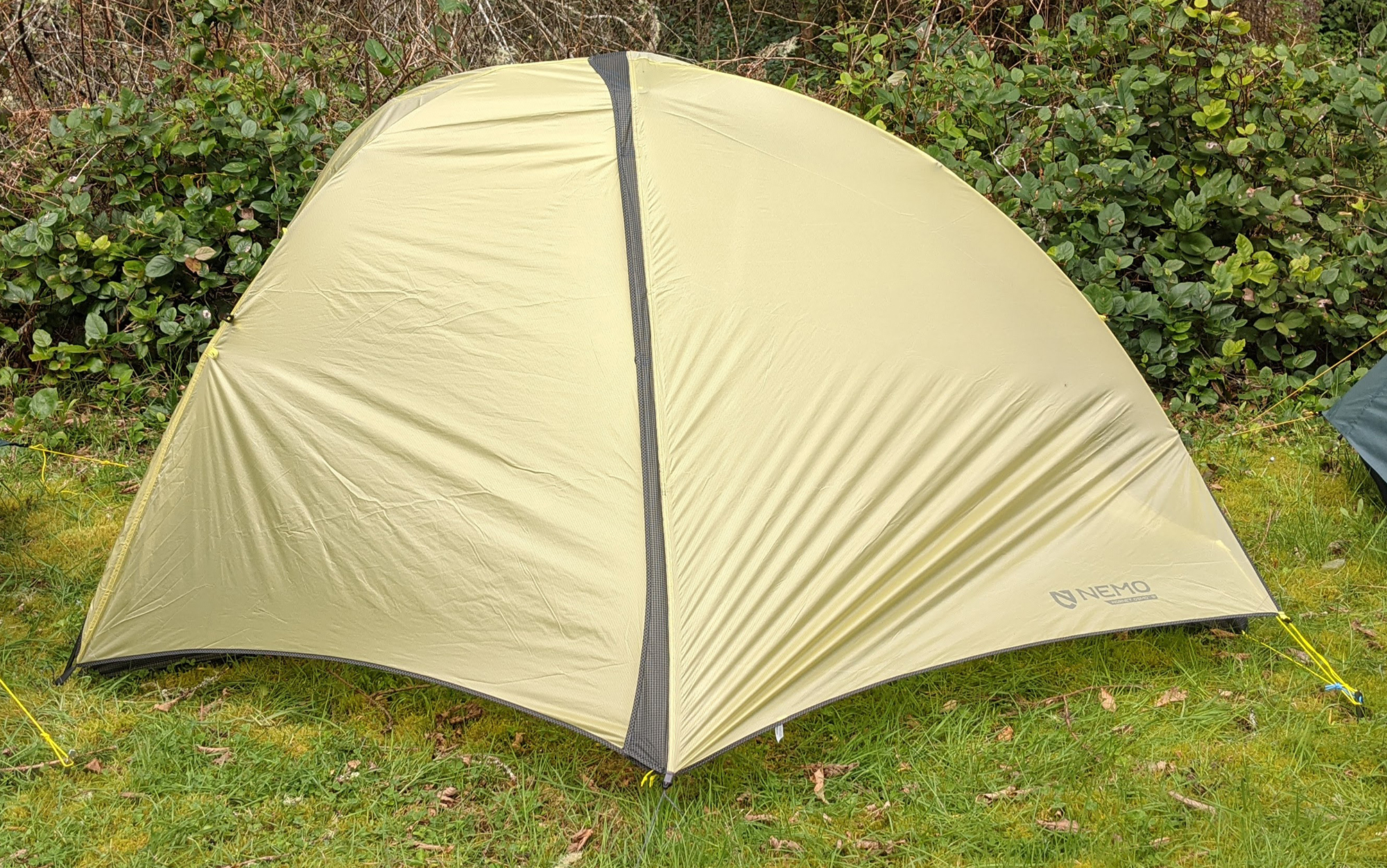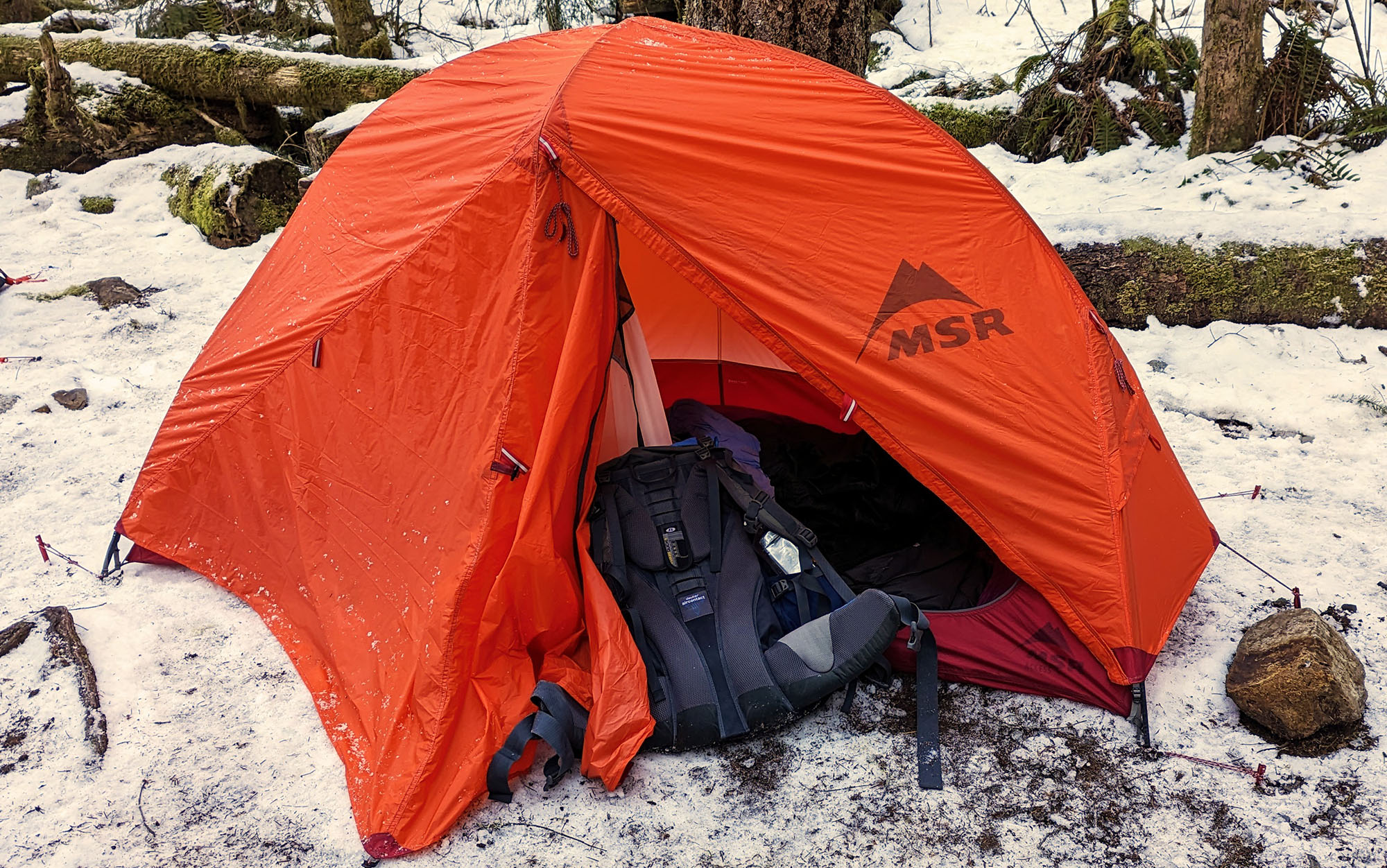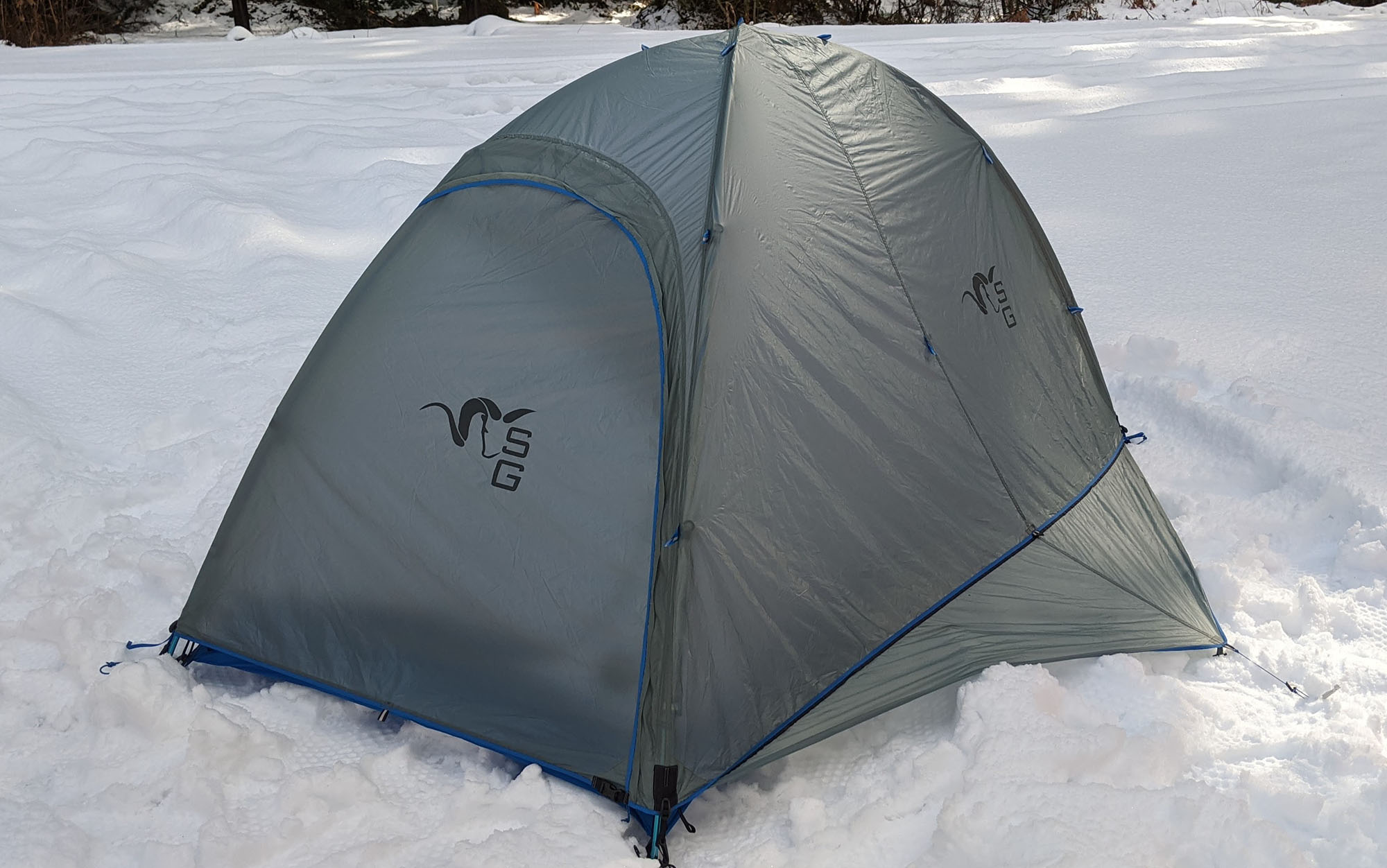We may earn revenue from the products available on this page and participate in affiliate programs. Learn More ›
Published Sep 21, 2023 3:40 PM
One of the easiest ways for backpackers and backpack hunters to cut weight from their kit is by switching from a two-person tent to a one-person tent. But not all single-occupancy shelters are created equal: they span a range of setup styles and dimensions, with some perfect for pint-sized beginners and others better suited for 6-foot-plus experienced trekkers. To help you find the right option for your size, experience level, and needs, Outdoor Life writers and contributors put over a dozen models of the best one-person tents to the test.
How We Tested the Best One-Person Tents
Since the most common reason to choose a one-person tent over one of the best two-person tents is to save weight in your backpacking kit, Outdoor Life’s inaugural backpacking gear test included a comprehensive look at the one-person versions of the best ultralight tents. We had testers across a range of experience levels give us insight on which tents were approachable for beginners or could be put up in a flash when the weather turns, and which tents require a more precise setup to be truly weather ready. Since then, I’ve had the chance to test additional one-person tents, both lightweight and ultralight, in the backcountry. Here, I’ve included the most impressive results from my personal testing, our test of the best ultralight tents, and my test of the best 4-season tents.
All tents were evaluated for ease of setup, weight, functional length and width, and interior living space. While I’ve provided the dimensions in the above table, keep in mind that the pitch angle of the walls of the tent will affect how much of that interior space you can use.
| Tent | Price | Style | Weight | Length | Width | Height |
| Big Agnes Tiger Wall UL1 | $400 | Semi-freestanding | 2 pounds, 2 ounces | 84 inches | 38 to 26 inches | 39 inches |
| Durston X-Mid 1 | $240 | Trekking poles | 1 pound, 12 ounces | 90 inches | 32 inches | 46 inches |
| Gossamer Gear The One | $255 | Trekking poles | 1 pound, 6 ounces | 84 inches | 33 to 21 inches | 45 inches |
| Mountain Hardwear Nimbus UL 1 | $400 | Semi-freestanding | 1 pound, 14.8 ounces | 86 inches | 38 to 28 inches | 38 inches |
| MSR Access 1 | $680 | Freestanding | 3 pounds, 8 ounces | 84 inches | 33 inches | 40 inches |
| MSR Freelite 1-Person | $420 | Semi-freestanding | 1 pound, 15 ounces | 87 inches | 33 inches | 39 inches |
| NEMO Hornet OSMO | $400 | Semi-freestanding | 2 pounds, 4 ounces | 87 inches | 43 to 31 inches | 39 inches |
| Sierra Designs High Side | $300 | Non-freestanding | 2 pounds, 8 ounces | 88 inches | 34 to 26 inches | 32 inches |
| Sea to Summit Alto TR1 | $500 | Semi-freestanding | 2 pounds, 7 ounces | 84.5 inches | 24 inches | 42.5 inches |
| Six Moon Designs Lunar Solo | $260* | Trekking pole | 1 pound, 8 ounces* | 90 inches | 24 inches | 49 inches |
| Stone Glacier Sky Solus | $545 | Freestanding | 4 pounds, 6 ounces | 80 inches | 40 inches | 42 inches |
| Tarptent Protrail | $240 | Trekking poles | 1 pound, 8 ounces | 84 inches | 42 to 30 inches | 45 inches |
Best One-Person Tents: Reviews & Recommendations
Best Semi-freestanding: Mountain Hardwear Nimbus UL 1
Key Features
- Weight: 1 pound, 14.8 ounces
- Dimensions: 86 x 33/21 x 45 inches
- Ease of Setup: Easy
- Interior Space: Moderate
- No trekking poles required
Pros
- Intuitive setup
- Able to handle substantial winds
- Very lightweight
Cons
- Head-on entry can be less comfortable for some
- Easy to lose stakes
I took the Mountain Hardwear Nimbus UL 1 on a solo 45-mile trek around the Goat Rocks wilderness in the Pacific Northwest. I’ll level with you: I had never set this tent up when packing my bag, and I didn’t get around to looking at the directions before heading out. I don’t recommend this (best practice dictates at least putting the thing up in your backyard before rolling out), but it turned out just fine in the case of the Nimbus. This tent was intuitive to set up, and it also performed admirably in fairly substantial wind at elevation.

Like other semi-freestanding tents, there is only one pole for the Nimbus UL 1. The main shaft runs down the length of the tent, connecting in the middle of the foot and then splitting at a hub to connect to both corners at the head of the tent. Additional foot space is created by staking out the corners at the foot of the tent. A feature I liked about the Nimbus UL 1 is that even more interior space is created by clipping a bungee on the body of the tent to the fly. I fit easily inside this tent and would recommend it for anyone up to five foot ten (I’m five foot five). One note is that this tent has head-on entry, rather than the side entry, more typical for this tent style. While ultralight and lightweight backpackers shouldn’t have any issue fitting their pack into the roomy vestibule, stiff joints may make getting inside the tent a bit of a chore.

What boosted the Nimbus UL 1 to the top of the semi-freestanding shelters list (in front of the also-impressive MSR FreeLite 1) is that it manages to get to the sub-two pound mark without compromising on any details. In particular, I was impressed that they included V-shaped tent stakes as part of the kit, which have almost as impressive holding power as tri-beam stakes (the best of the best in my test of the best tent stakes). I experienced both substantial wind and rain on my testing trip, and not only did the NImbus UL 1 keep me dry, but I also noticed that I slept better in this tent than in other comparable models because of the security of the overall design.
I only have a couple of quibbles with the Mountain Hardwear Nimbus UL 1. The first is the strange bungee that secures the pole bag to the tent body. Ultralight backpackers are very unlikely to use these, as they typically separate their poles from their tent body to pack the interior of their pack more efficiently.

Adding reflective loops to the stakes would have been a better use of that weight. This tent requires no fewer than eight stakes for a full setup, but without any kind of cordage, it is both difficult to pull the stakes out of firm ground or even see them once you’ve taken down the tent in certain kinds of environments.
Read Next: How to Pack a Backpack
Best Design: Durston X-Mid 1
Key Features
- Weight: 1 pound, 12 ounces
- Dimensions: 90 x 32 x 43 inches
- Ease of Setup: Difficult
- Interior Space: Good
- Two trekking poles required
Pros
- Excellent geometry makes for a stable set up
- Double the vestibule space of typical tents
- Very affordably priced
Cons
- Not as light as some other ultralight tents (DCF version is much more expensive)
- You’ll want to grab some different stakes (included options weren’t the best)
The Durston X-Mid 1 impressed the most experienced member of our backpacking gear testing group, Jac “Top Shelf” Mitchell so much that she chose to take it along with her when she set you to hike the Great Divide Trail—the 700-mile Canadian extension of the Continental Divide Trail. When set up correctly, the Durston X-Mid 1 has incredible geometry, fully taut and secure against wind and rain, not sagging in the slightest when serious moisture sets in. Even when it wasn’t set up perfectly (a loose stake popped on my first night in this tent), it was shockingly stable: I didn’t even notice until morning. Top Shelf reported back that it didn’t take long for her to become so efficient at setting up this tent that she could put it up faster than a freestanding tent.
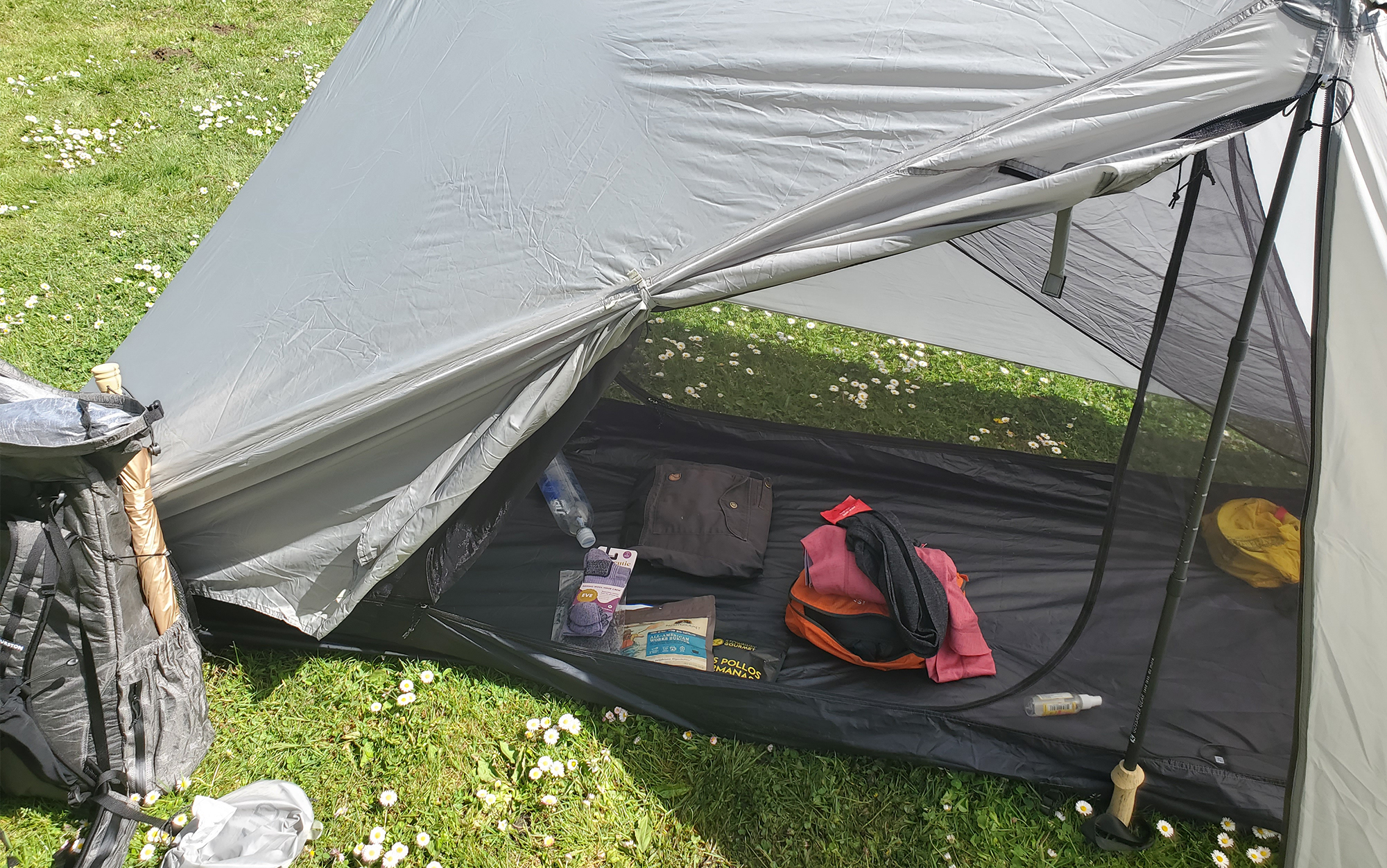
Even though the rainfly was soaked from the unrelenting condensation of the Oregon Coast on our testing trip, I was completely dry in this tent, thanks to its double-wall setup. What makes the Durston X-Mid 1’s double-wall set up especially unique is that it was designed to be pitched fly first—no additional groundsheet required. This is such a preferable order of operations in inclement weather that I hope this becomes the norm in the future. Our testers also noticed that the pitch had steeper walls than was typical, which maximizes livability—even if it doesn’t technically give you more floor space.
The Durston X-Mid 1 even had two doors and two vestibules. What one-person ultralight tent has a vestibule for your gear and a totally separate side for you to exit on for a midnight bathroom break? As far as we know, the Durston X-Mid 1 is the only one. This was also one of the lowest priced options in our test. Even though it’s a similar weight to the other double-wall ultralight tents we looked at, the Durston X-Mid 1 is (at the time of this review) about $200 less expensive.

So what’s wrong with this tent? To start: it’s not your lightest option. For the same weight as the Durston X-Mid 1, you could get a semi-freestanding tent. (Durston does offer a 1-pound version of this tent in DCF, but the price point for that is up there with the Zpacks Solo Plex.) Its setup also proved challenging for testers accustomed to freestanding tents: If this is your first trekking pole tent, give yourself some time and space to play around with perfecting the setup.
Finally, you remember I mentioned a stake popped out the first night we used this tent? That stake had bent while being pushed into reasonably soft ground. I’d plan to replace them with one of the best tent stakes, with an eye toward MSR Groundhog minis or Big Agnes Dirt Daggers.
Best Double Trekking Pole: Gossamer Gear The One
Key Features
- Weight: 1 pound, 6 ounces
- Dimensions: 84 x 33/21 x 45 inches
- Ease of Setup: Average difficulty
- Interior Space: Good
- Two trekking poles required
Pros
- Easy to set up
- Reasonably priced
- Good sized interior that felt homey to our testers
Cons
- Not worth it unless you already use two trekking poles
The Gossamer Gear The One is the total package. It’s easy to set up, even for first-time ultralight tent users. It’s very light (third lightest in our test of the best ultralight tents). It has enough head room to move around comfortably in the morning. The vestibule fit all our gear with room to spare. It packs up small. It even had an interior pocket stow pocket for odds and ends like eyeglasses. Check. Check. Check.
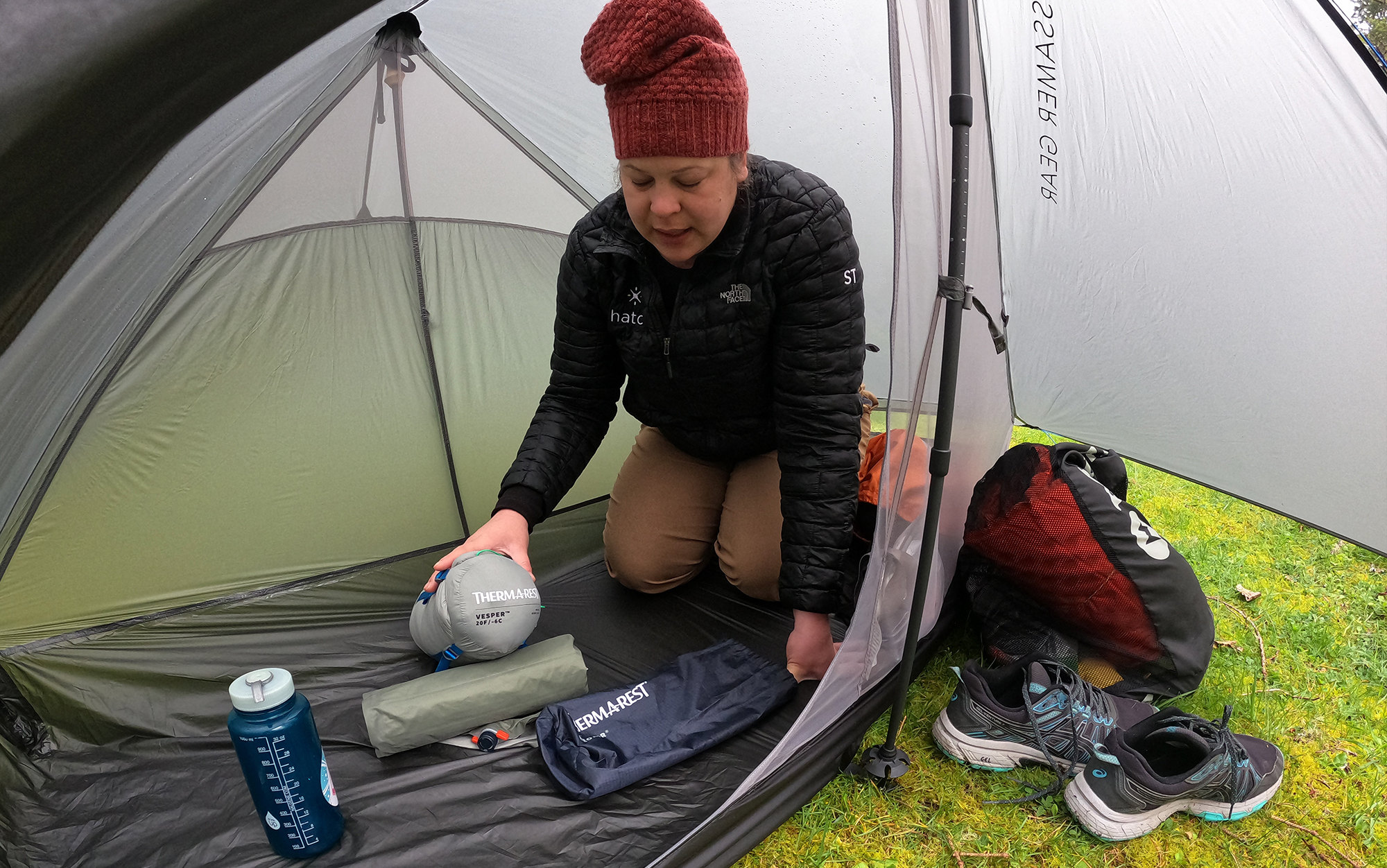
The testers who used this tent during our test of the best ultralight backpacking gear wanted to be in this tent at the end of the day and were happy to wake up in it in the morning—even our tallest tester at 5 foot 10 inches. There was more wrangling to be the next tester for this tent than of any other we looked at.
Both testers who took this tent out reported that they were able to figure out how to set up the tent without directions (something that was decidedly not true for all the ultralight tents in our test). However, they both noted the lack of directions provided in the package—consider downloading these to your smartphone before heading out into the field.
The only downside to this tent is that it requires two trekking poles to set up, making it less weight-conscious for backpackers who don’t already have trekking poles as part of their set up.
Best Single Trekking Pole: Six Moon Designs Lunar Solo
Key Features
- Weight: 1 pound, 8 ounces (does not include required stakes)
- Dimensions: 90 x 48 x 49 inches (tapers steeply at both the head and foot)
- Ease of Setup: Moderate difficulty
- Interior Space: Poor
- One trekking pole required
Pros
- Easy to set up
- Ability to adjust the door guyline from inside the tent
- Affordable
Cons
- Low walls can be claustrophobic
Maybe you’re like me: You don’t typically use trekking poles while hiking, but you’ve been known to toss one into your pack for gnarly river crossings or for extra stability on steep, snowy terrain. But there’s no way you’d carry two just to use in a trekking pole setup—at that point you might as well just use a freestanding model.
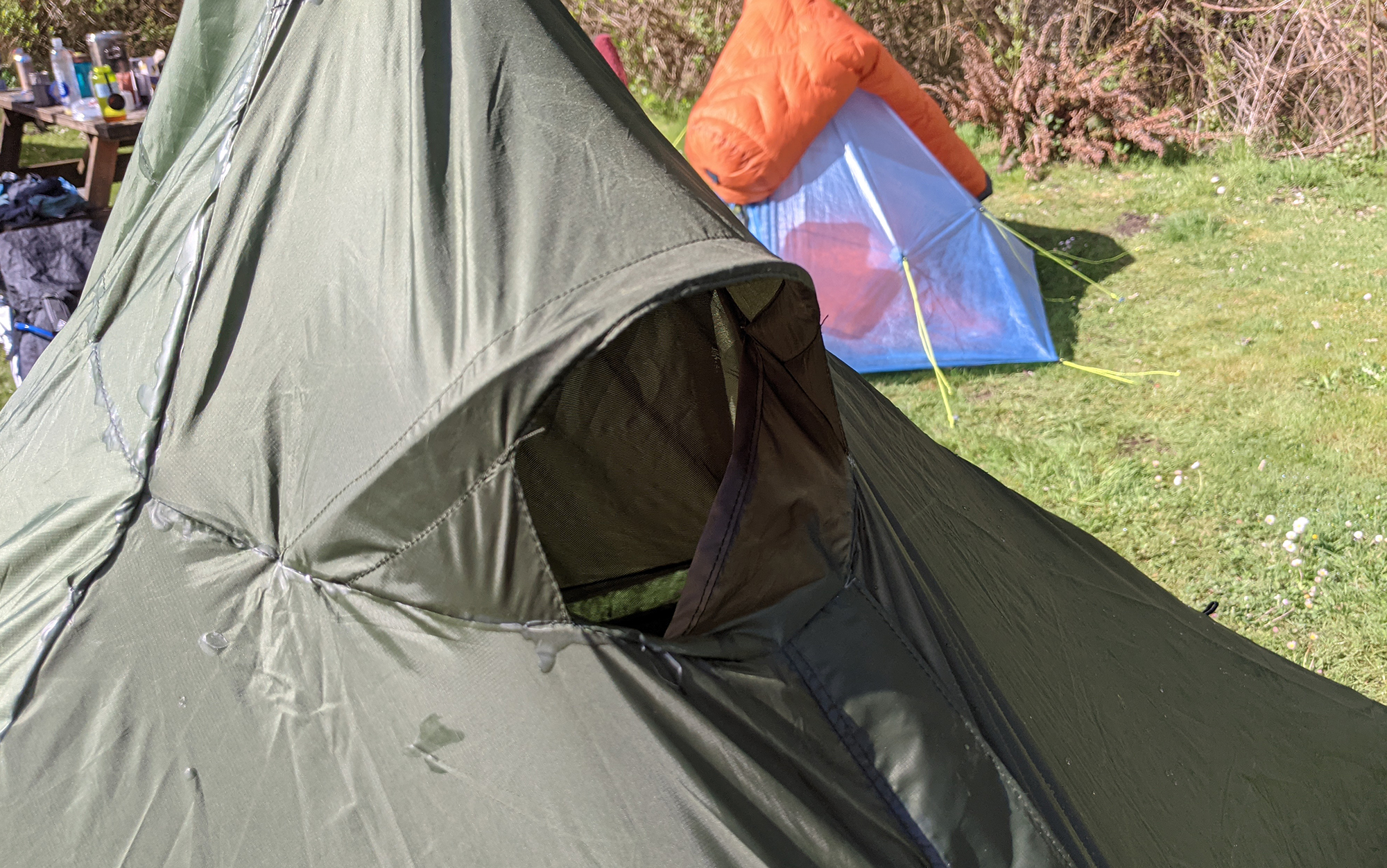
The Six Moon Designs Lunar Solo is one of the few ultralight tents that uses a single trekking pole in its design rather than two. The result is a modified teepee structure that was surprisingly intuitive to set up. Despite having never used this tent, I was able to put it up in only a couple of minutes without directions.
It also had a few details I appreciated. The first was a vent on the top of the tent. It didn’t help with the unrelenting fog of the Oregon Coast, but in drier climes it would reduce condensation buildup from exhaling inside your tent. It also had a tension adjustment for the rainfly door inside the tent, a thoughtful detail that I haven’t seen before. This would allow you to get rid of excess slack (typically caused by wind or condensation) in the part of the tent covering your gear without having to get out of your tent.
While the peak height of this tent is sufficient, I found it difficult to avoid bumping my head against the condensation-soaked tent walls in the morning. This was in part due to my site location: I was pitched on slightly uneven ground, which made it difficult to achieve the steeply sloped walls that would have been possible on flat ground.
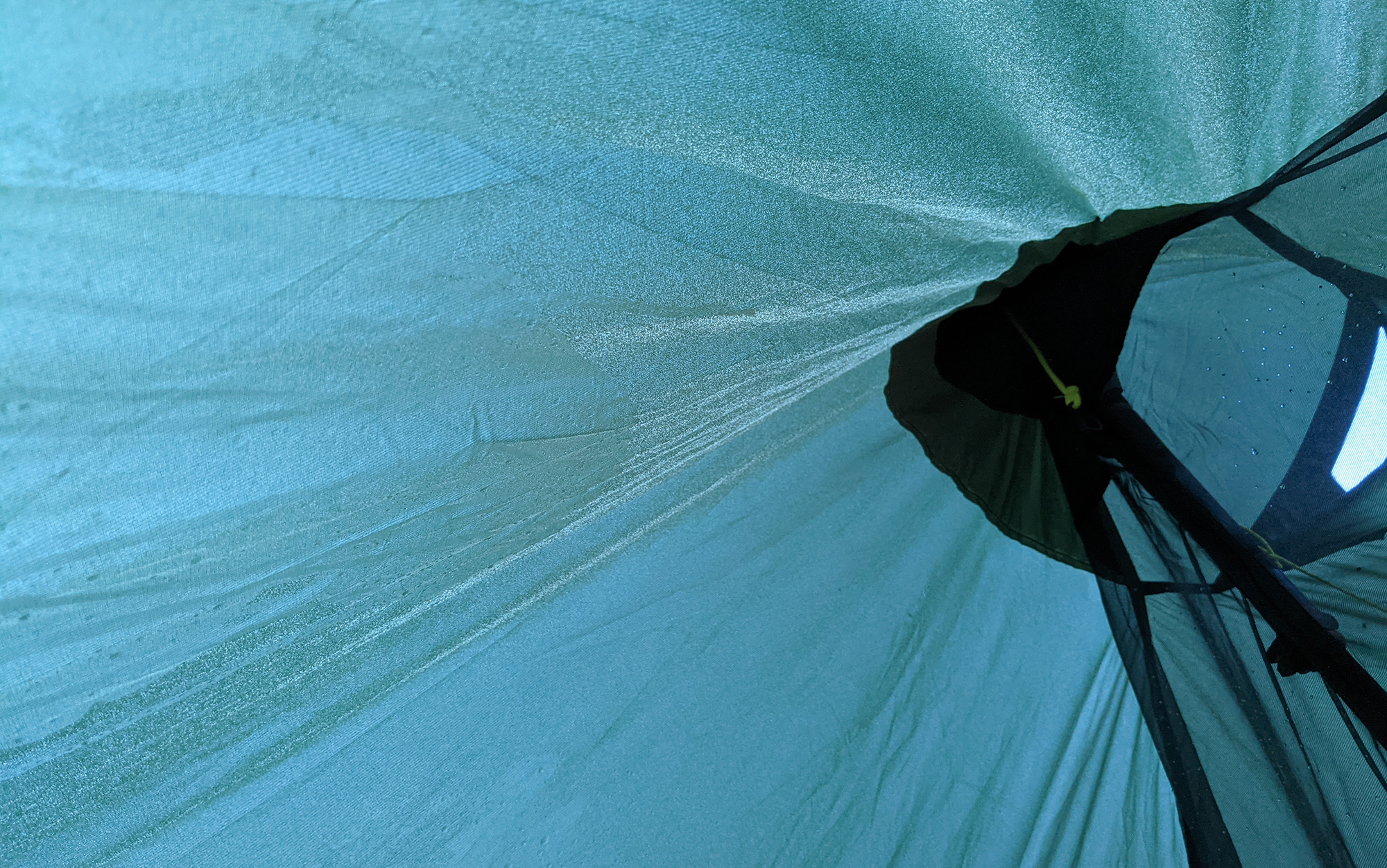
While this tent is affordably priced, note that the price does not include stakes; you’ll need to purchase those separately. (See our take on the best tent stakes for some ideas.)
Best Eco-Friendly: NEMO Hornet OSMO
Key Features
- Weight: 2 pounds, 4 ounces
- Dimensions: 87 x 43/31 x 39 inches
- Ease of Setup: Easy
- Interior Space: Average
- No trekking poles required
Pros
- Eco-friendly materials
- Easy to set up
Cons
- Heaviest freestanding tent we looked at
In recent years there’s been growing awareness that what goes into creating these practically weightless waterproof tent fabrics isn’t always great for the environment. If this is starting to weigh on you (it’s starting to weigh on us), then the NEMO OSMO series is one to seriously consider.
NEMO is one of the backpacking gear companies leading the charge in creating more environmentally sustainable fabrics and processes. Their OSMO tent fabric is made from 100 percent recycled material (a composite of polyester and nylon) and achieves an impressive water repellency without the use of PFAS.
The NEMO Hornet OSMO is a semi-freestanding tent that holds its own in the ultralight arena. It was just a couple of ounces heavier than the other semi-freestanding tents we looked at (the Big Agnes Tiger Wall UL, MSR Freelite, and Mountain Hardwear Nimbus UL), with similar interior space and ease of setup. If you’re looking to reduce your impact on the environment, this is a great option that will keep your backpacking kit ultralight.
Best for Tall People: Tarptent Protrail
Key Features
- Weight: 1 pound, 8 ounces
- Dimensions: 84 x 42/30 x 45 inches
- Ease of Setup: Difficult
- Interior Space: Good
- Two trekking poles required
Pros
- Usable length makes this a great option for taller individuals
- Could fit two people in a pinch
- Affordable
Cons
- Tends to sag in the middle in condensation-prone conditions
- Individuals with a shorter wingspan will struggle with setup
Plenty of people over 6-feet tall won’t even look at a one-person ultralight tent. After all, the easiest way for manufacturers to save weight and protect your UL bonafides is to simply make your tent smaller than the competition. And, to be honest, the all-women testing crew on our ultralight tent backpacking trip, which topped out at five foot ten, was mostly fine with that. But there was one ultralight tent we tried that was clearly built with an over 6-foot individual in mind: the Tarptent Protrail.
While plenty of other ultralight tents claim a similar 84-inch length, few actually have that much usable space, due to the taper of the walls. Not so in the Tarptent Protrail, which has fully vertical sides at the top and the bottom of the tent. We think that anyone up to six foot four would be comfortable lying down inside this tent.
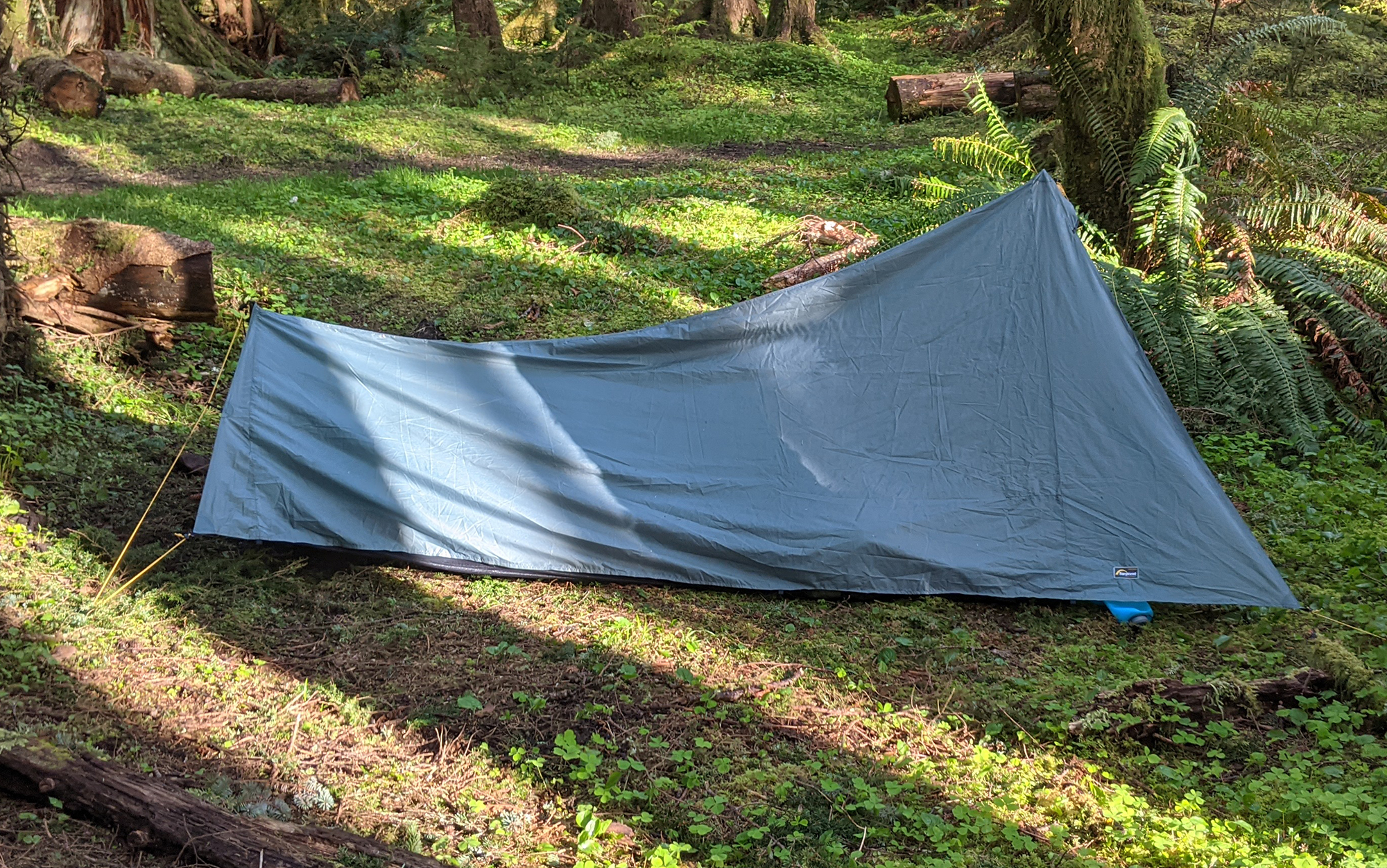
The two trekking poles used in the setup of the Tarptent Protrail were separated lengthwise, 84 inches from one another. That long profile, without any additional support or structure in the center, meant that it sagged noticeably when condensation was present. While this tent was tested in fairly calm conditions, I would have concerns about the Protrail in serious wind conditions if it was angled incorrectly or if wind was coming from multiple directions.
It’s worth noting that shorter people will struggle to set up this tent, as one of our testers discovered on the final night of our trip along the Oregon Coast Trail. That’s because the front trekking pole must be held upright at the same time as you stake out the far door: the wingspan of a shorter individual just can’t reach that far.
Best Head Room: Sea to Summit Alto TR1
Key Features
- Weight: 2 pounds, 7 ounces
- Dimensions: 84.5 x 24 x 42.5 inches
- Ease of Setup: Easy
- Interior Space: Great
- No trekking poles required
Pros
- Great interior space that punches above its stated dimensions
- Ventilation at the top of the tent
- Interior lighting option
Cons
- Three separate packing sections is excessive
- Expensive
Plenty of one-person tents have a reputation for being fairly claustrophobic, so it was great to get inside of the Sea to Summit Alto TR1 and discover that it was fully bucking that trend. While its stated dimensions are, if anything, on the short and narrow side for a one-person tent, a slight tweak to how the overhead poles are designed makes it feel more spacious than other tents with similar head heights. The difference here is that the short cross-section of the single pole that gives this semi-freestanding tent its shape is angled upward, rather than down. That means that the head height of this tent (42.5 inches) is maintained across its width, near the center of the tent—right where you would typically sit up. I have a very long midsection and it was clear that I would have plenty of space to sit up and move around—even change—inside.

One other unique feature of the Sea to Summit Alto TR1 is the addition of a light bar that you connect to the roof of your tent via snap buttons. This gives you the option of creating a fairly substantial and pleasant reading light. For many lightweight and ultralight backpackers, this feature is likely to be left in the camping bin in their garage due to the added weight, more traditional backpackers may appreciate its utility.

The biggest downside of this one-person tent is its price: the only two tents more expensive than this had four-season capabilities.
Best for Winter: MSR Access 1
Key Features
- Weight: 3 pounds, 8 ounces
- Dimensions: 84 x 33 x 40 inches
- Ease of Setup: Easy
- Interior Space: Average
- No trekking poles required
Pros
- Virtually no condensation
- Comparatively lightweight
- Great stuff sack
- Easy setup
Cons
- Expensive
- Somewhat delicate materials require care
The MSR Access was my pick for the best four-season tent based on testing conducted with the one-person model. First off, it’s extremely lightweight for a winter tent. It sets up easily with little fiddling to achieve a taut structure and had almost no condensation problems during testing. The lack of condensation is especially impressive given that nighttime temps dropped into the low twenties during testing and the individual who used this tent had a hot water bottle stashed in the bottom of her sleeping bag. The temperature differential between the inside and the outside of this tent was substantial, yet moisture did not accumulate.
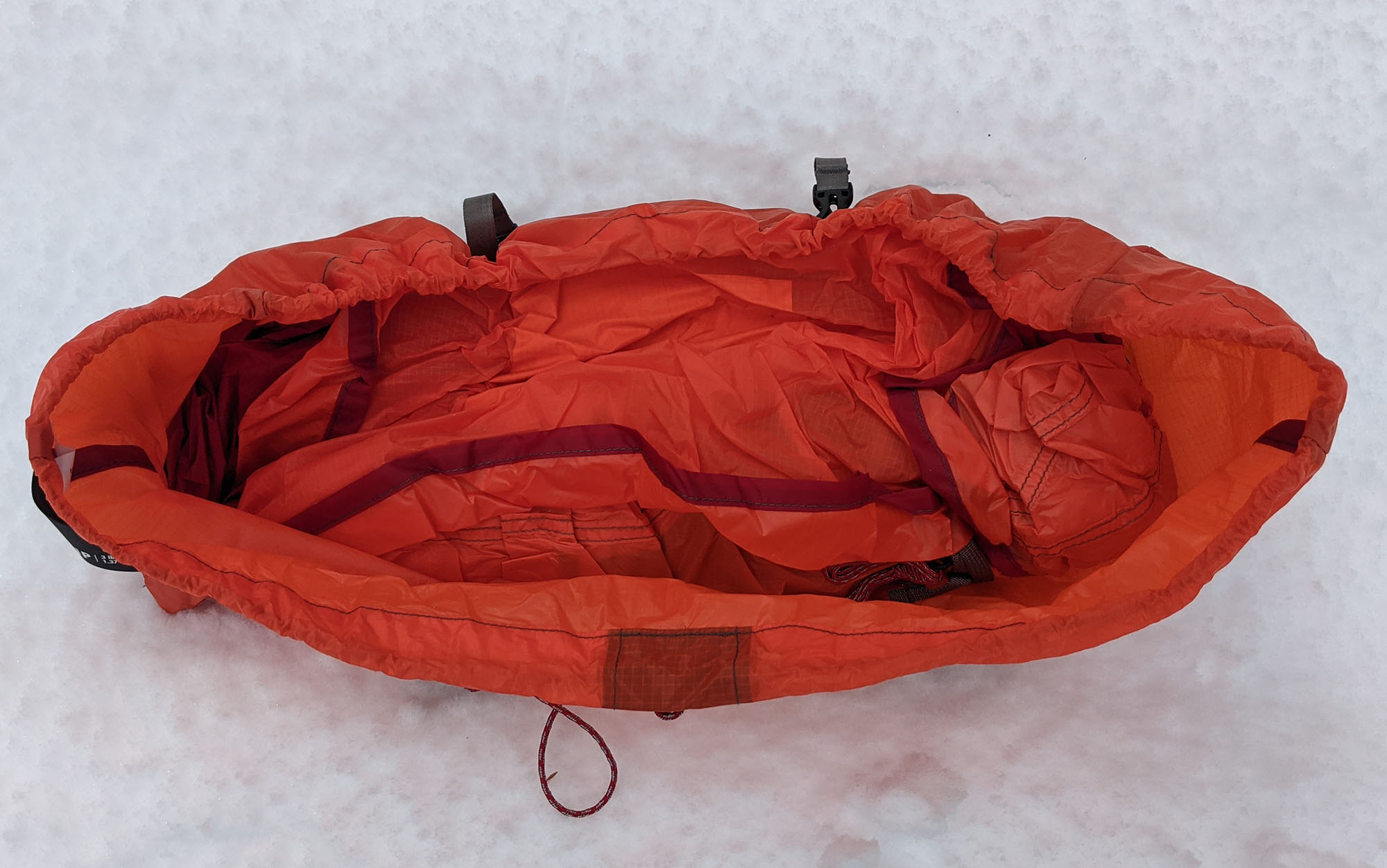
Unusually, the MSR Access achieves this exceptional ventilation with only one tiny window. The body of the tent itself—20D ripstop nylon—is breathable, helping the moisture generated inside your tent move to the exterior of the fabric. The rainfly’s design maximizes airflow by pushing moisture-laden air from inside the tent to the outside.
One small detail that made a big difference is the design of the MSR Access’s stuff sack. While most tent stuff sacks are longish cylinders with top openings, the MSR Access is a longish cylinder with a large wide side opening. This made packing away a wet tent a breeze, and saved both my and my tester’s fingers from getting unnecessarily cold during the quick cleanup to leave camp.
Best for Hunters: Stone Glacier Sky Solus
Key Features
- Weight: 4 pounds, 6 ounces
- Dimensions: 80 x 40 x 42 inches
- Ease of Setup: Average difficulty
- Interior Space: Excellent
- No trekking poles required
Pros
- Very roomy interior
- Design details make this easier to set up in bad weather
- Protected side vestibules
Cons
- No large vestibule for your backpack
No one plans to get stuck in their tent during a storm, but if it was going to happen to me, I’d want to be in the Stone Glacier Sky Solus. First off, for a one-person tent, it’s exceptionally roomy. Just about everyone will be able to fit not only themselves (the diagonal measurement is well over seven feet), but also the majority of their gear inside the tent with them.
It also takes an unusual approach to the vestibules. Rather than having a single vestibule outside the door of the tent, it has two smaller ones on the sides of the tent. You can access these from inside the tent via a cinch-cord opening. They aren’t massive vestibules, but it’s enough to hold anything you don’t want in the tent with you (best hiking boots or backpacking rain jackets), and they are very protected from the elements by the low-lying rainfly. Generous mesh pockets provide additional storage options on the inside of the tent.
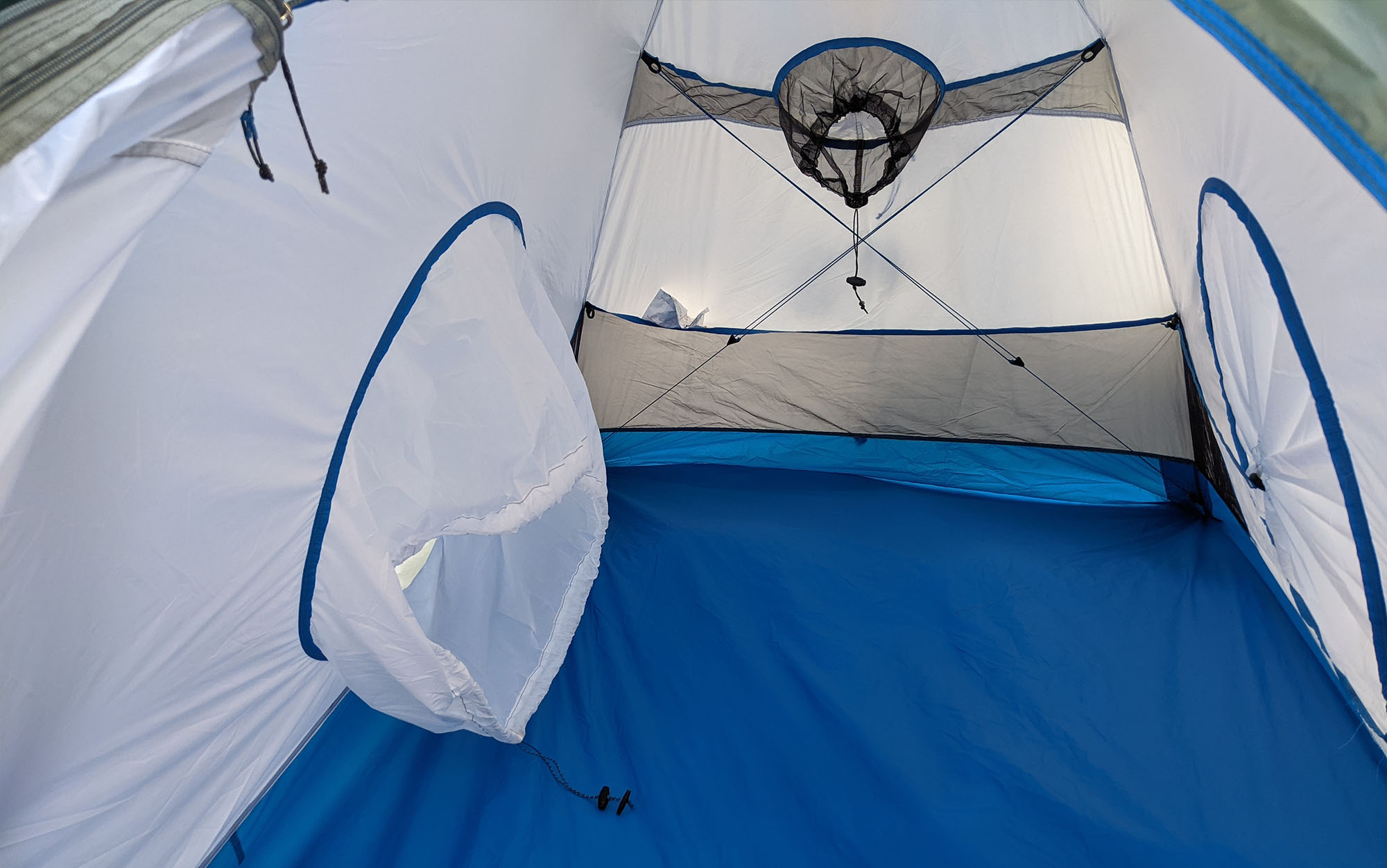
The sides of the tent are protected sufficiently that you could conceivably leave the access points to the vestibules open for extra ventilation overnight. An additional cross-breeze can be obtained by partially opening the door to the tent and a third, small opening at the back of the tent. (When packing up this tent at the end of your trip, ensure the cinch cords are pulled closed from the inside.)
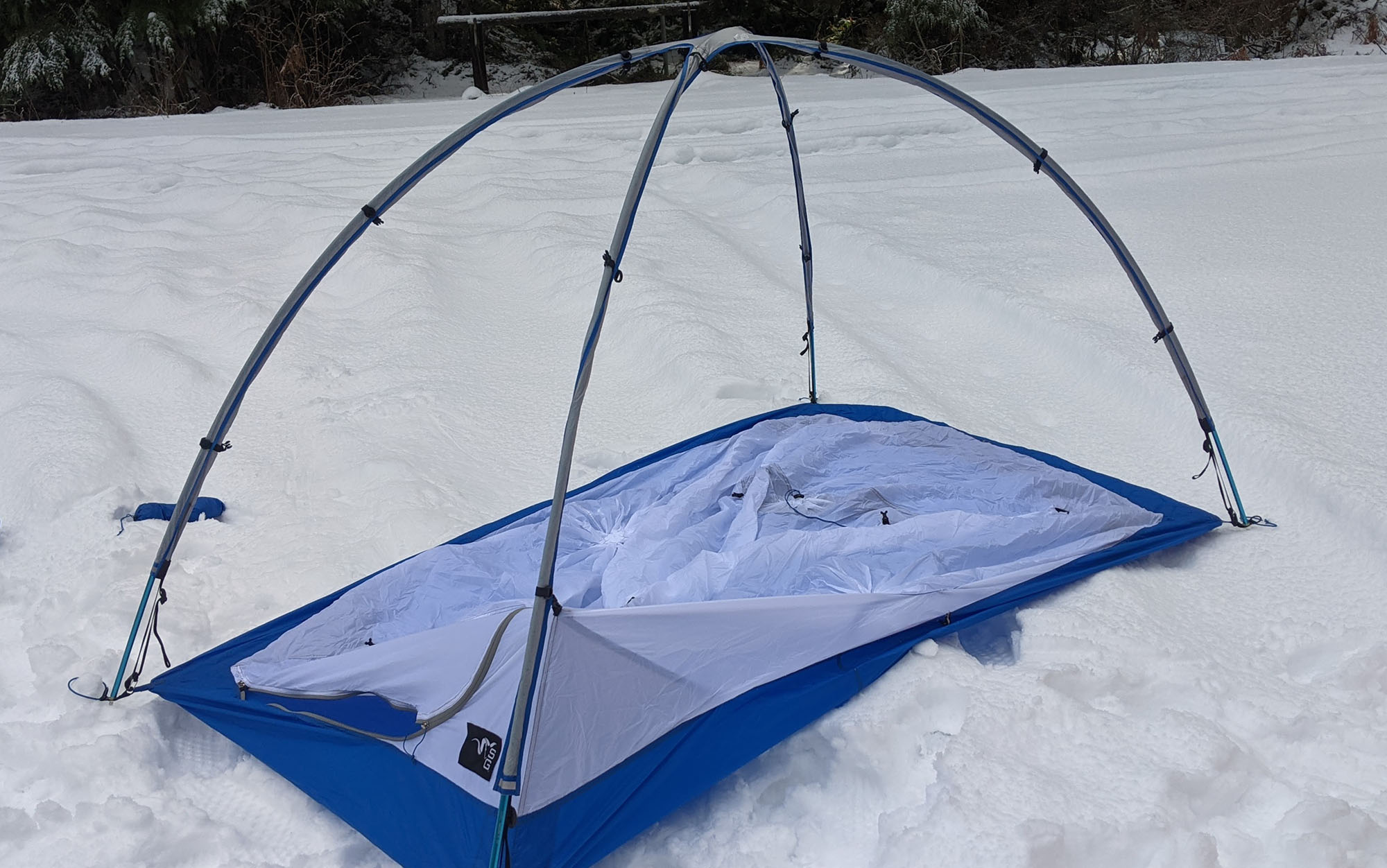
Even the setup of this tent takes the challenges of stormy conditions into consideration. There are two fabric sleeves for the poles that can be unhooked from the body of the tent. This means that in exceptionally bad weather, you could assemble your poles and slot them criss-cross into the sleeves, providing extra stability before you battle the winds to attach the fabric body of the tent.
Best for Beginners: Sierra Designs High Side
Key Features
- Weight: 2 pounds, 8 ounces
- Dimensions: 88 x 34/26 x 32 inches
- Ease of Setup: Average difficulty
- Interior Space: Poor
- No trekking poles required
Pros
- Significantly lower price than other options on this list
- Straight-forward setup appropriate for early-career backpackers
Cons
- Not a semi-freestanding tent (will collapse if the stakes come out)
- Cramped interior
One-person tents sometimes feel like they fall into one of two categories: either they’re semi-freestanding models that are a breeze to set up but cost an arm and a leg, or they’re affordable trekking-pole tents with a steep learning curve. The Sierra Designs High Side struck a middle note between those two scenarios. It’s reasonably simple to set up (no trekking poles required) and costs an easy $100 less than comparable semi-freestanding models. It does weigh a few ounces more than other lightweight or ultralight one-person tents, but it still weighs light years less than a standard two-person tent.

There are some downsides to the Sierra Designs High Side, however. The most obvious one is its height. This was the shortest tent I looked at, and you really feel that on the inside. There’s more space here than in a typical bivy, but there is not enough space to sit up. The net effect is fairly claustrophobic. I’d save this one for the height of summer, where you are likely to be spending your evening hours out of the tent anyway (and may even experiment with cowboy camping).
The other issue here is that this tent is not freestanding. With semi-freestanding tents, every single one of your stakes could pop out of the ground and your tent would still be standing, just minus a fair bit of floor space. But the pole design of the Sierra Designs High Side—which I’d wager is how they kept the cost and weight down at the same time—span the width, rather than the length of the tent. Most of the time this won’t be an issue, but if you are planning to camp out on a rock slab without easy purchase for stakes, this tent will be much more difficult to get set up.
The Rest of the Field
The MSR Freelite 1 was my initial pick for the best of the semi-freestanding tents. It’s under two pounds, sets up lightning fast, and has the chops to handle serious conditions. The Mountain Hardwear Nimbus UL 1 sneaked into the top spot because it performed a bit better in a few key areas. It is slightly less expensive while coming in at a slightly lower weight. It also comes with stakes that have slightly better holding power. But these are some fairly minor quibbles: the MSR Freelite 1 is an excellent ultralight tent for beginners and experienced users alike.
The Big Agnes Tiger Wall UL 1 also impressed our testing group during the inaugural OL test of the best ultralight tents. While a couple of ounces heavier than the Mountain Hardwear Nimbus UL 1 and the MSR Freelite 1, the Big Agnes Tiger Wall UL 1 had noticeably better headroom for our taller testers. This one is a mainstay of the thru-hiking world for a reason.
Things to Consider Before Choosing a One-Person Tent
Weight
The whole reason you are looking at a one-person tent, as opposed to a much more spacious, comfortable two-person tent, is to save on weight, right? Right. Do not even consider a one-person tent that is over three pounds: at that point you might as well start looking to see what lightweight or ultralight two-person models are on clearance. The exception to this is tents built for the worst weather conditions like the Stone Glacier Sky Solus or the MSR Access 1.
Size
While the stated dimensions of each of these tents will help give you an idea as to whether you and your sleep system will fit inside of a given one-person shelter, the only way to really know if a one-person shelter will feel roomy enough to sleep in night after night or a bivy-style coffin is to get inside of it yourself. I’ve provided notes in the above as to how roomy (or cramped) each tent feels, but, if possible, try each one you are considering out for yourself before making a final purchase.
Freestanding versus Trekking Poles
There are essentially six styles of tents out there: freestanding, semi-freestanding, non-freestanding, single trekking pole, double trekking poles, and tarps. Freestanding tents are akin to what you see at the campground, tents where stakes are not required for the structure of the body of the tent. Semi-freestanding tents use stakes to flesh out the body of the tent, but will stand up without them. Non-freestanding tents need the tension created by staking out the corners to stand up. Trekking pole tents are all a type of non-freestanding tent, but ones that use some of the best trekking poles, rather than dedicated poles. Some require a single trekking pole to use; others require two. Camping tarps are a type of trekking pole tent and are some of the most minimalist (and lightest) options out there. These are typically only suitable for the most advanced backcountry users as they require knowledge and experience with different knots and tensioning techniques.
Price
If you’re considering a one-person tent, odds on are that you are considering a serious expedition, like a thru-hike, where you’ll be counting every ounce. Despite their high price, quality light and ultralight one-person tents are one of the most efficient ways to spend your money to save weight. This is one where it’s worth it to pay a bit more.
FAQs
Q: What size tent is best for one person?
One-person tents typically work best for individuals who are on the smaller side. There are a couple of one-person tents on the above list that are appropriate for individuals over six-feet, but typically these individuals find they are more comfortable with two-person tents, especially if they are on the stockier side.
Q: How heavy is a one-person tent?
While there are one-person tents that weigh in excess of four pounds, you shouldn’t consider one that is over three pounds.
Q: Where do you put a tent on a backpack?
The best way to pack a tent on your backpack is to start by separating out the poles from the body of the tent. Place the body and rainfly into your backpack; without the poles, it’s a lot easier to stuff in and position around the rest of your gear. The poles go into one of the side pockets of your backpack, secured by a compression strap. While it is popular to lash tents onto the bottom of a backpack, this style of packing places too much heavy weight on the bottom of your pack, which can drag down your shoulders.
Why Trust Outdoor Life?
Since 1898, OL has been a leading authority in testing and reviewing hunting gear, fishing tackle, guns and shooting equipment, and much more. We have more than a century-long history of evaluating products, and we’re now bringing that expertise to online reviews. Our editors are experienced outdoorsmen and women, and most importantly, we’re trained journalists. We prioritize field testing and objective data when reviewing products. We conduct interviews with gear manufacturers and engineers as well as outdoor experts so that our readers have an understanding of how and why a product works—or doesn’t.
Advertising does not influence our gear reviews and it never will. While we always focus our coverage on standout products—because we want our readers to be aware of the latest and greatest gear—we also cover the flaws and quirks of any given product.
Final Thoughts on the Best One-Person Tents
If you’re getting serious about solo adventures, investing in one of the best one-person tents is a great way to save ounces—even pounds—from your kit. I’ve tested, both on my own and in parallel to other testers, over a dozen of some of the best one-person tents on the market, including top lightweight and ultralight models from Big Agnes, NEMO, MSR, Mountain Hardwear, Sierra Designs, Stone Glacier, Tarptent, Dan Durston, Gossamer Gear, Sea to Summit, and Six Moon Designs. Here are my picks for the top one-person tents across a variety of styles.

